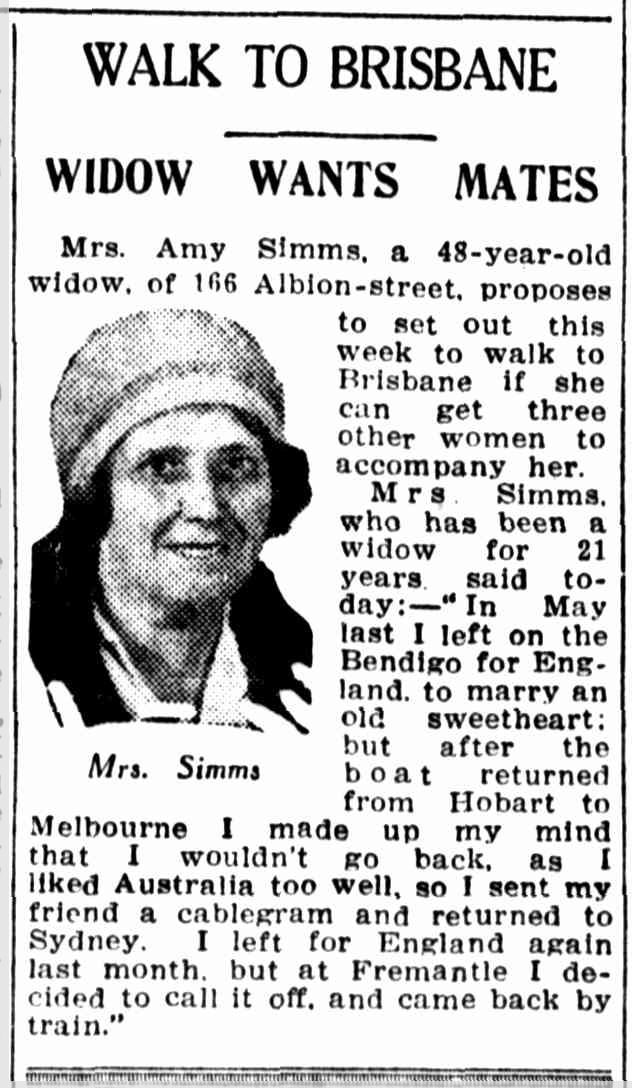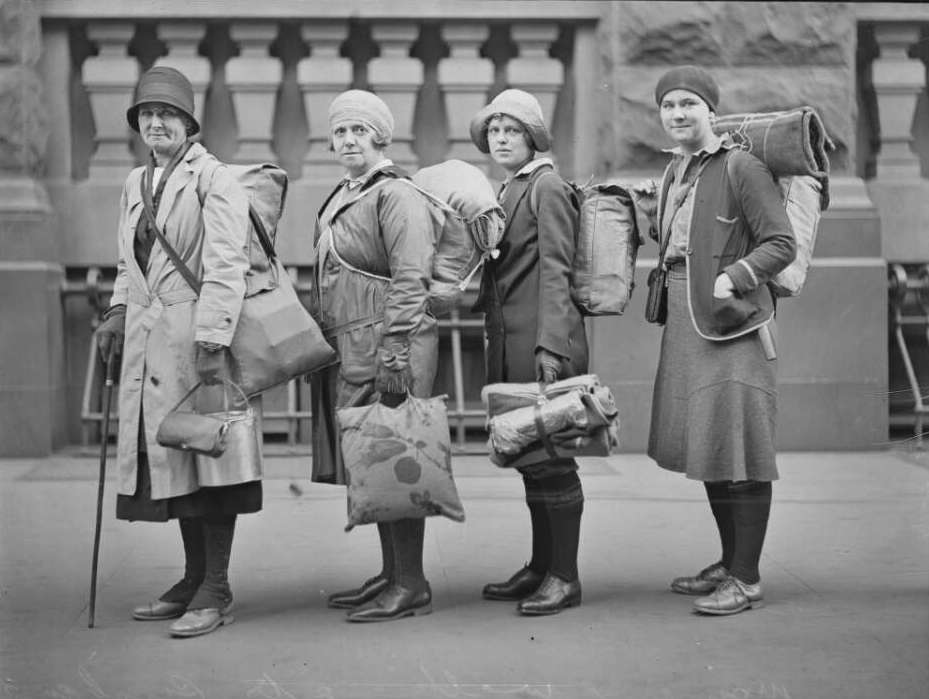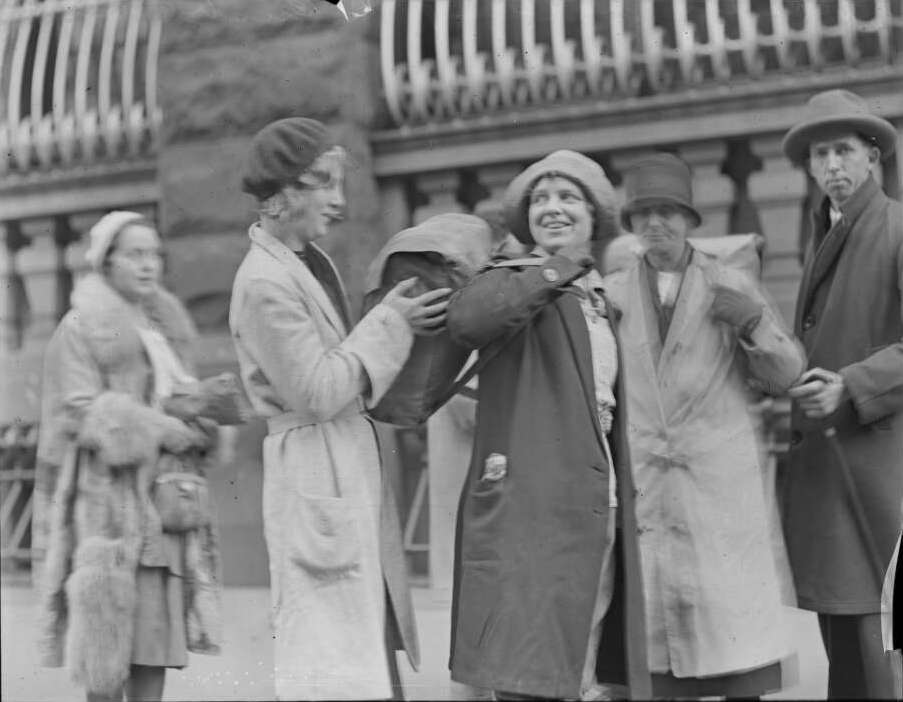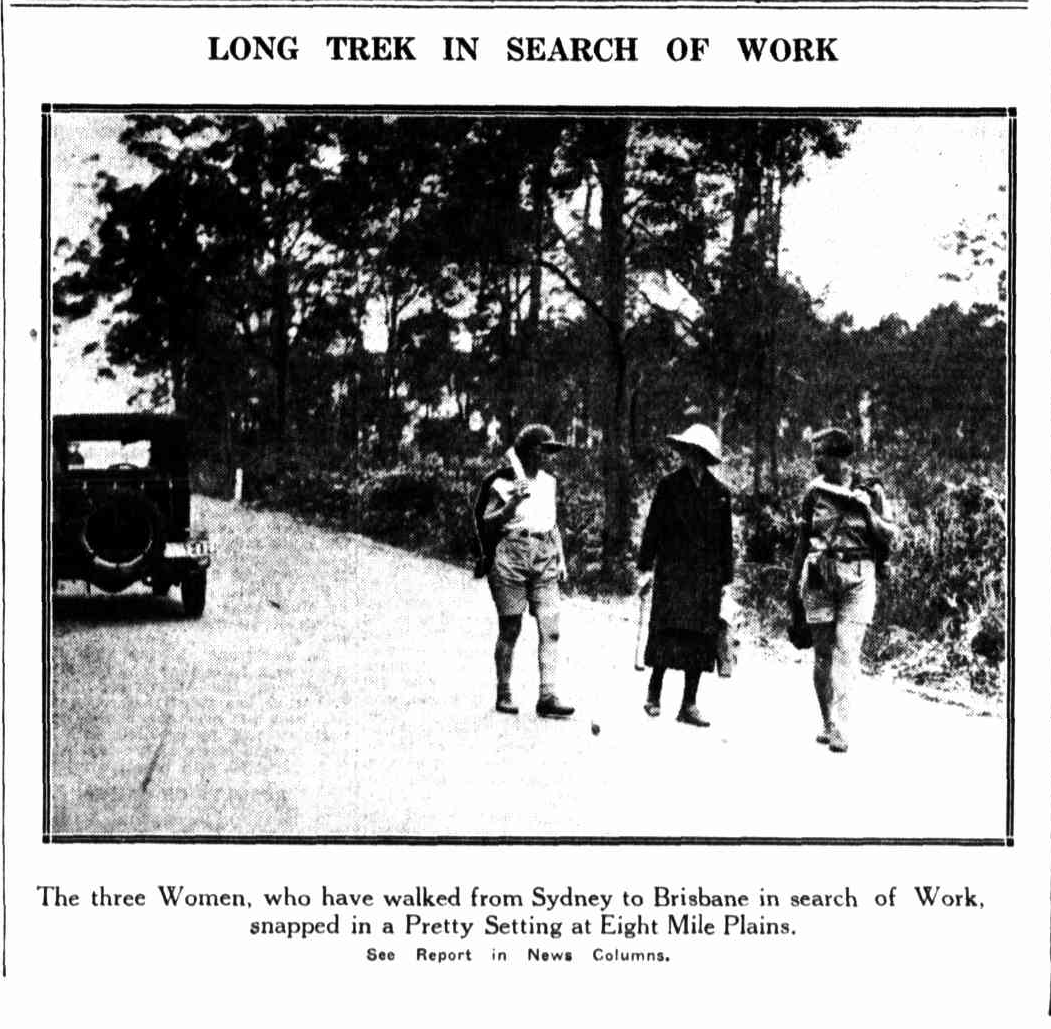
The wild, wild walk
If you tried to sell this true story as a movie concept you would likely get turned down for it seeming too unbelievable.
The story starts on 29 July 1931 when four women set off on a 600-mile walk from Sydney to Brisbane in search of work. The walk took months. By the time they arrived in Brisbane the women had encountered quicksand, an unfriendly bull, had an axe accident and they were one woman down.
Follow along as we step you through this equally thrilling and terrifying journey.
Talking the talk about walking the walk
'I was lured by the ranges in the hazy distance and I felt the compelling call of the country.' – C.H. Baxter, In Search of Work, The Telegraph,18 September 1931, nla.news-article190688103
Grandmother of five, Mrs C.H. Baxter, found the desire to go on a walking tour after taking her grandson for a stroll to the Mascot Aerodrome (now known as Sydney Airport). She read a newspaper advertisement from a woman named Amy Simms who was searching for three women to join her on a walk from Sydney to Brisbane in search of work. Mrs Baxter and two friends were chosen to join Amy on her trek.

Every journey begins with a single step

On 29 July 1931 Mrs C.H. Baxter, Amy Simms, Tennie Wray and Dot Swain set off on foot from the Sydney General Post Office to Brisbane.
Three of the women earned nicknames along the journey. Mrs C.H. Baxter was known as ‘Coo-ee’, Miss Swain as ‘Bok’ and Miss Wray as Luck.
The first fork in the road
Their walk was big news at the time. Trove is full of newspaper articles on each stage of their trip.
As the women arrived in each Australian town they were greeted by reporters and residents who had been tracking their journey in the newspapers.
By 3 August 1931 they had reached Wyong. Less than a week into the trip and the papers were reporting the first of many incidents of their walk. The Sydney Morning Herald reported that Amy cut her foot with a hatchet while chopping wood for a campfire. Despite this injury the group continued to deny offers of lifts from motorists.
‘She grasped a stout over-hanging limb and held on until her shouts brought the others to the scene, and they dragged her to safety.’ – Eventful Trip, The Week, 9 September 1931, nla.news-article192080125
The journey from Coffs Harbour to South Grafton was one of the most challenging parts of the entire trip. The group’s second brush with danger happened at Glenreagh when Tennie went to fill up her billy-can at a nearby waterhole. She found herself quickly pulled in by quicksand and was knee-deep before her shouts for help was answered.
Despite this close encounter with quicksand, Glenreagh residents were thrilled to welcome them to the town. On 8 September 1931 The Richmond River Herald and Northern Districts Advertiser reported that residents greeted the group with cake, fruit, chocolate, eggs, and a parcel of meat from the local butcher.
The dangers of bull-dozing
On their way to Coffs Harbour the women also battled severe frost. This was particularly bad when they were sleeping out in the open. Another challenge for the group was being kept awake all night by the squealing of local opossums.
In an effort to escape the sounds of the opossums the group inadvertently set up camp in a bull paddock. In the early morning, they awoke to discover they had attracted the attention of a stamping bull. They escaped through a boundary fence and lived to tell the tale of their misadventure.
Being a group that didn’t shy away from danger, they also made a stopover at a haunted house near Coramba. They’d heard rumours that the unoccupied house was prone to strange occurrences. The Daily Mercury learned that the group heard strange noises during their stay but thought it was likely caused by rats.
Mrs Simms in Sydney with a revolver

All the women packed a spare change of clothes, food for one day and extra pair of shoes. The Coffs Harbour Advocate made mention of the fact that they decided not to pack a tent and that ‘Mrs Simms carries a revolver’. Amy had felt a tent would slow the team down because they would have to keep putting it up and packing it down.
After the first fortnight of walking, Amy decided to end her journey early and return to Sydney. Her hatchet wound had become infected and she had also received word about possible work back in Sydney.
Crossing the finish line

One teammate down the women continued their trek. When temperatures became too cold to sleep outdoors the women slept in abandoned houses, hotels, court houses and even in jail cells after some strong convincing.
After the many forks in the road, the women finally arrived in Brisbane on 18 September 1931. The whole trip was inspired by the women’s desire to find work. So, were they successful in their quest? The Daily Mercury reported that a local theatre promised the women a week of work upon their arrival in Brisbane.
See if you can find out more in Trove about what happened to the women after they arrived in Brisbane. We’ll get you started with this Trove list about their walk.